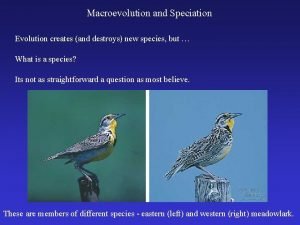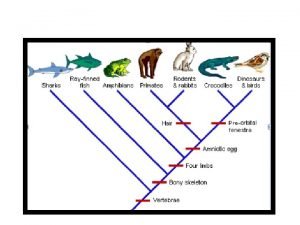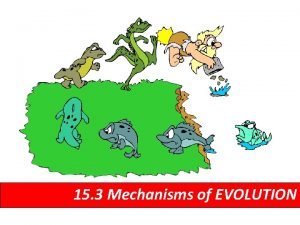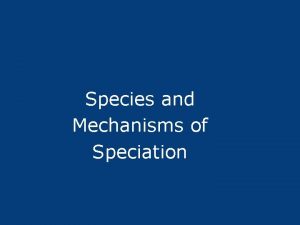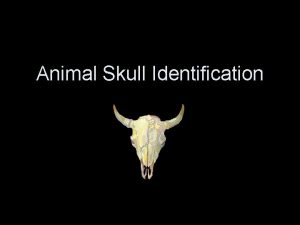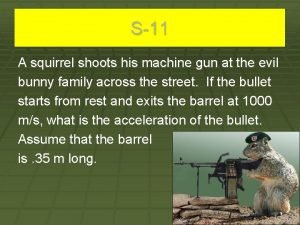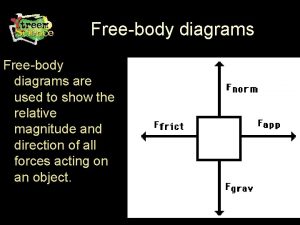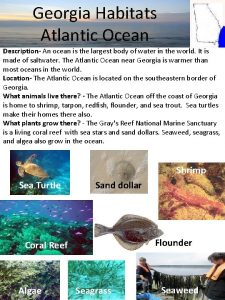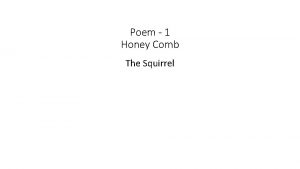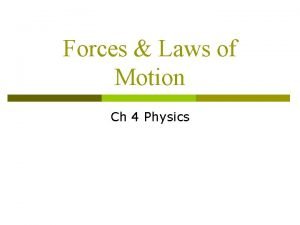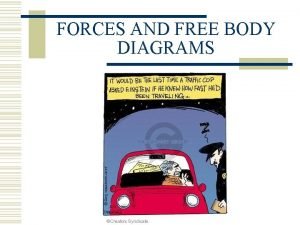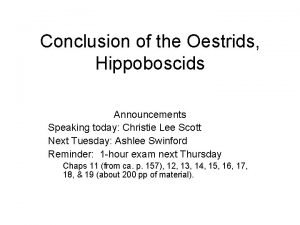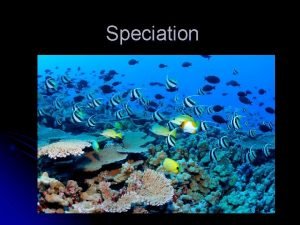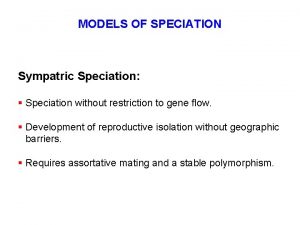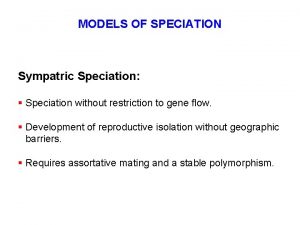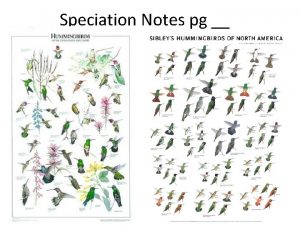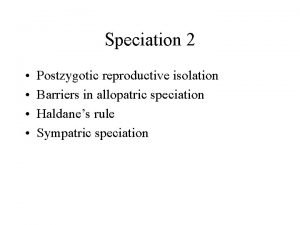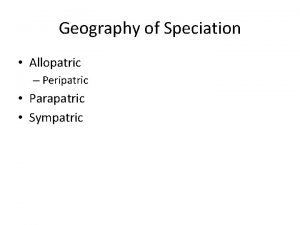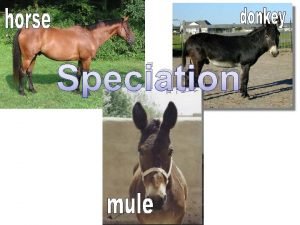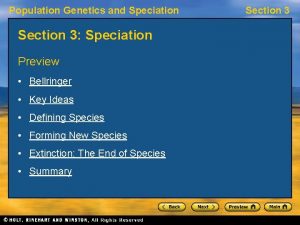Allopatric speciation Harris groundsquirrel Whitetailed ground squirrel Allopatric































- Slides: 31

Allopatric speciation Harris’ groundsquirrel White-tailed ground squirrel

Allopatric speciation Albert’s squirrel Kaibob squirrel



Hawaiian Drosophila

Speciation due to dispersal. . . Fig. 22. 16

. . . can give rise to huge numbers of species. Adaptive radiation. Fig. 24. 11

Speciation in the lab Fig. 24. 12

Fig 23. 1

high Wind direction Tolerance to metals low Adults Off mine tailings Adults On mine tailings

Sympatric speciation? Many species in small isolated, bowl-shaped lake. Schliewen, et al. 2001. Genetic and ecological divergence of a monophyletic cichlid species pair under fully sympatric conditions in Lake Ejagham, Cameroon. Molecular Ecology 10: 1471.

Sympatric speciation ? ?


Sympatric Speciation • Closely related species often sympatric • Disruptive selection • Assortative mating

Fig 24. 13 Polyploidy Self fertilization New species with 2 n = 12 2 n = 6 Error during meiosis makes gametes with n = 6

Gametes Zygote - infertile

2 n = 14 2 n = 28

IV. Macroevolutionary Pattern A. Tempo of Speciation 1. gradualism 2. punctuated equilibrium B. Phylogenetic Reconstruction 1. an example 2. the problem of convergent evolution 3. molecular traits

Fig. 24. 17

salamander frog mouse bird lizard E D B C A snake

Current species: salamander frog mouse bird lizard E D B C A snake

ancestors: salamander frog mouse bird lizard E D B C A snake

Fig 22. 14 humerus ulna radius carpals phalanges

Some snake species still have non-functional pelvis bones and little leg bones.

Source: Ray Troll, in Matsen and Troll 1994 Planet Ocean. Ten Speed Press, Berkeley.

The problem of convergent evolution: the Tasmanian wolf is more closely related to the kangaroo than it is to the North American red wolf Red Wolf Tasmanian Wolf




Homeobox (Hox) genes have same order, structure and similar pattern of expression in mouse and fly!

 Sympatric speciation vs allopatric speciation
Sympatric speciation vs allopatric speciation Sympatric speciation example
Sympatric speciation example Speciation
Speciation Examples of coevolution
Examples of coevolution Digital design and computer architecture arm edition
Digital design and computer architecture arm edition Assortative
Assortative Contact points
Contact points Skull of carnivore
Skull of carnivore Kania 2000 trap
Kania 2000 trap A tired squirrel (mass of 1 kg)
A tired squirrel (mass of 1 kg) Squirrel with machine gun
Squirrel with machine gun Free body diagram of a bungee jumper
Free body diagram of a bungee jumper Squirrel gi joe photo
Squirrel gi joe photo Squirrel cage rotor
Squirrel cage rotor The squirrel poem lesson plan
The squirrel poem lesson plan Squirrel ward gosh
Squirrel ward gosh Georgia atlantic ocean habitat
Georgia atlantic ocean habitat Mildred bowers armstrong image
Mildred bowers armstrong image A student attaches a rope to a 20 kg box of books
A student attaches a rope to a 20 kg box of books A tired squirrel (mass of 1 kg)
A tired squirrel (mass of 1 kg) Mary ann cotton poem
Mary ann cotton poem Squirrel island activity answers
Squirrel island activity answers A book is at rest on top of a table free body diagram
A book is at rest on top of a table free body diagram A flying squirrel is gliding (no wing flaps)
A flying squirrel is gliding (no wing flaps) Singular and plural
Singular and plural What does atticus do that “horrifies” jem and scout?
What does atticus do that “horrifies” jem and scout? Bot fly squirrel
Bot fly squirrel Free body diagram flying squirrel
Free body diagram flying squirrel Food web energy pyramid
Food web energy pyramid Speed control of squirrel cage induction motor
Speed control of squirrel cage induction motor Sitable
Sitable They ran through the brambles
They ran through the brambles
